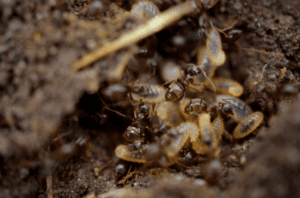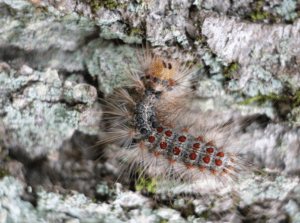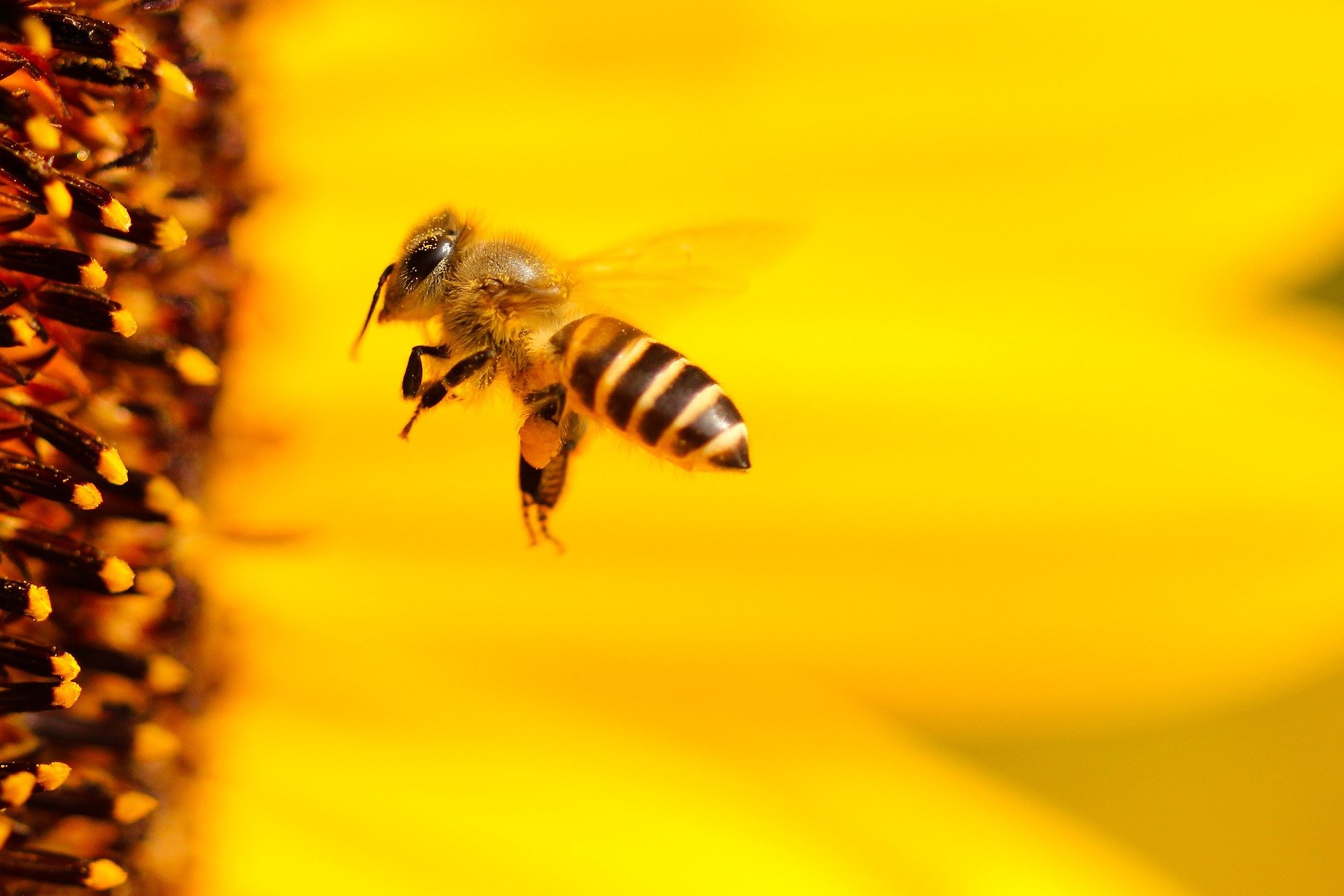
From the coffee we drink to the fruit we love and even the clothes we wear, bees play an integral part in it all.
But there’s a problem.
The world’s bees are under threat, and we need to change our ways to save them. Fortunately, there are many ways to help bees. By changing some of our habits, we can provide a better world for these hard-working little pollinators.
Here is our guide to saving bee populations and making them more welcome in our daily life.
Why Bees Are Worth Saving
One out of every three bites of food you eat every day is due to a pollinator ̶ without bees, we would starve. Honeybees have been around for thousands of years. But today, they need our help more than ever.
We can do small things to help such as planting bee friendly gardens, not using pesticides and providing a welcoming habitat for bees to thrive.
Besides the delicious honey they produce, honeybees are our most important pollinators. There are 28 sub-species of the Western honeybee and they all play an important role in pollinating our food crops. Crops such as fruit, vegetables, grains, cereals, nuts, coffee, chocolate, and the crops that feed livestock.
Every part of our food chain would collapse without bees.
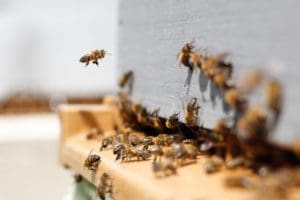
Why Are Bees Under Threat?
The issue is, bee populations are declining thanks to loss of habitat, disease, extreme weather caused by climate change and the high use of agrochemicals and pesticides in food production.
On the disease front, there are a variety of microorganisms that cause disease in bees and all around the world, beekeepers are reporting large losses in bee colonies. These organisms include a mite called varroa mites in North America and nosema dysentery. Varroa mites cause deformed wing virus which prevents bees from flying and collecting pollen. Then there is American Foulbrood which affects the bee larvae.
Farming practices such as monoculture also limit the food available to bees, so bees become malnourished and they get weak, making them susceptible to disease and parasites.
Many scientists believe that the use of pesticides together with loss of prime habitat has led to suboptimal sources of food and weakened immune systems in bee colonies. The blanket term is called Colony Collapse Disorder (CCD).
With our ecosystem out of sync thanks to our negative impact on the earth, new parasites and diseases affecting bees are being discovered all the time.
Why We Need Pollination
Pollination enables plants to form seeds which allows plants to reproduce and grow new plants. Pollination may happen via wind or water, but the most successful method is via pollinators, which are bees, birds, bats, and insects. Of all the pollinators, bees are the best and most efficient.
Bees are also important in the dairy and livestock industries ̶ crops such as clover and alfalfa are fed to livestock. Other items important to us include cotton, flax and beeswax used in cleaning and beauty products are all dependent on bees.
Estimates are that bees contribute more than $15 billion to the US agricultural industry alone.
Bees Role in Our Ecosystem
Bees also play an essential role in our ecosystem by maintaining a healthy environment. Plant life and flowers provide clean air, plants clean water and they stabilize our soils. Bees pollinate plants and flowers. Without them, our ecosystem would sicken and crumble.
What We Can Do To Save The Bees?
Communities of people globally are joining hands to save the bees. In the US, the Living Systems Institute runs a campaign called “Bee Safe Neighborhoods”. The campaign certifies areas or neighborhoods that are free of toxic chemicals. Some 8 bee safe neighborhoods to date have been certified, 5 in Colorado, 2 in Michigan and 1 in Virginia. Why not consider turning your neighborhood into a “bee safe” neighborhood.
In the UK, the Welsh town of Monmouth has been named the UK’s first Bee Town. Monmouth implemented a selective mowing program on council-managed public land, which allowed wild flowers to thrive. This created more food for bees. The policy has not only befitted Monmouth but surrounding towns and villages as well.
Nonprofits such as The Honey Bee Conservancy and Karma Honey Project both work to raise funds for bee conservation. They raise awareness and run education campaigns on the importance of bees. They provide different ways you can help besides making donations.
Ways To Help
If you want to be part of the bee solution, there are a number of ways you can help:
Stop Using Pesticides
Pesticides are like broad-spectrum antibiotics; they don’t just kill the insects they are supposed to. You can help by avoiding pesticides if possible and rather using natural methods. Use an environmentally friendly option if you can’t avoid pesticides. Also do some research on harmful ingredients.
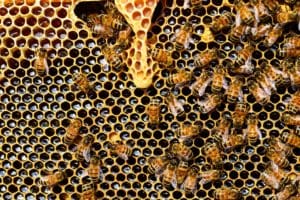
Plant Bee Friendly Gardens
Bee friendly gardens are not difficult to grow. All bees need is food (pollen) and safe places to nest or form a colony. From small window-boxes or your whole yard, you can plant a variety of species that flower at different times to provide year-round food for bees.
Some of the plants that attract bees include:
Flowers: Sunflowers, daisies, asters, hydrangeas, sunflowers, salvia, calendula, and verbena.
Bulbs: Alexanders, larkspur, dianthus, wild columbine, ajuga, lupine, baptisia and pulmonaria.
Herbs: Rocket, sage, thyme, borage (a bee favorite), lavender, chives, dill, basil, oregano, rosemary, thyme, and mint.
Don’t Forget Trees And Shrubs
Trees and shrubs are a good way to provide shelter and a wind break for bees. Nurturing existing trees and planting new ones are an effective way of providing a good garden for bees.
If you are considering planting trees, try these US trees loved by bees:
- American Basswood (linden)
- Southern Magnolia
- Sourwood
- Cherry
- Redbud
- Crab apples
- Serviceberry
- Tulip Tree
- Tupelo
If you don’t have a large garden or live in an apartment with access to a small outside area, don’t worry. There are still a number of ways you can help the bees:
Consider planting a seed ball in a small pot or window-box. Seed balls are an old traditional way of planting seeds using ordinary inert clay with seeds of plants loved by bees wrapped or buried in the clay. The clay ball is planted in a pot and watered. Consider using California poppy or borage seeds which bees love.
Bee Baths
Like humans, bees need water to drink. A small pond or bee bath will give them a place to rest and recuperate. Place pebbles in the bath and refresh the water regularly. The pebbles are good landing pads for bees wanting a drink. A small bee bath can also be stored on a small balcony or windowsill if you don’t have a garden.
Giving Bees A Home
If you haven’t got the space for a hive, consider buying a small bee house to hang in your garden in a secluded area. Some 70% of bees live underground while the rest shelter in tree trunks. If you can, leave a designated area untouched and secluded to give bees a safe habitat to nest.
Create Awareness
Creating and spreading awareness is a vital element to any worthy cause. Talk to your neighbors and friends or organize a neighborhood fund-raiser. Consider starting a bee club and get the kids involved too.
Spreading awareness about why we need pest control services and taking steps to support bees can make a positive impact. By addressing pest infestations and investing in professional pest control, we create a pest-free environment that benefits both humans and beneficial insects like bees. Together, we can make a difference and create a better world for all.
Contact Twin Boro today!





